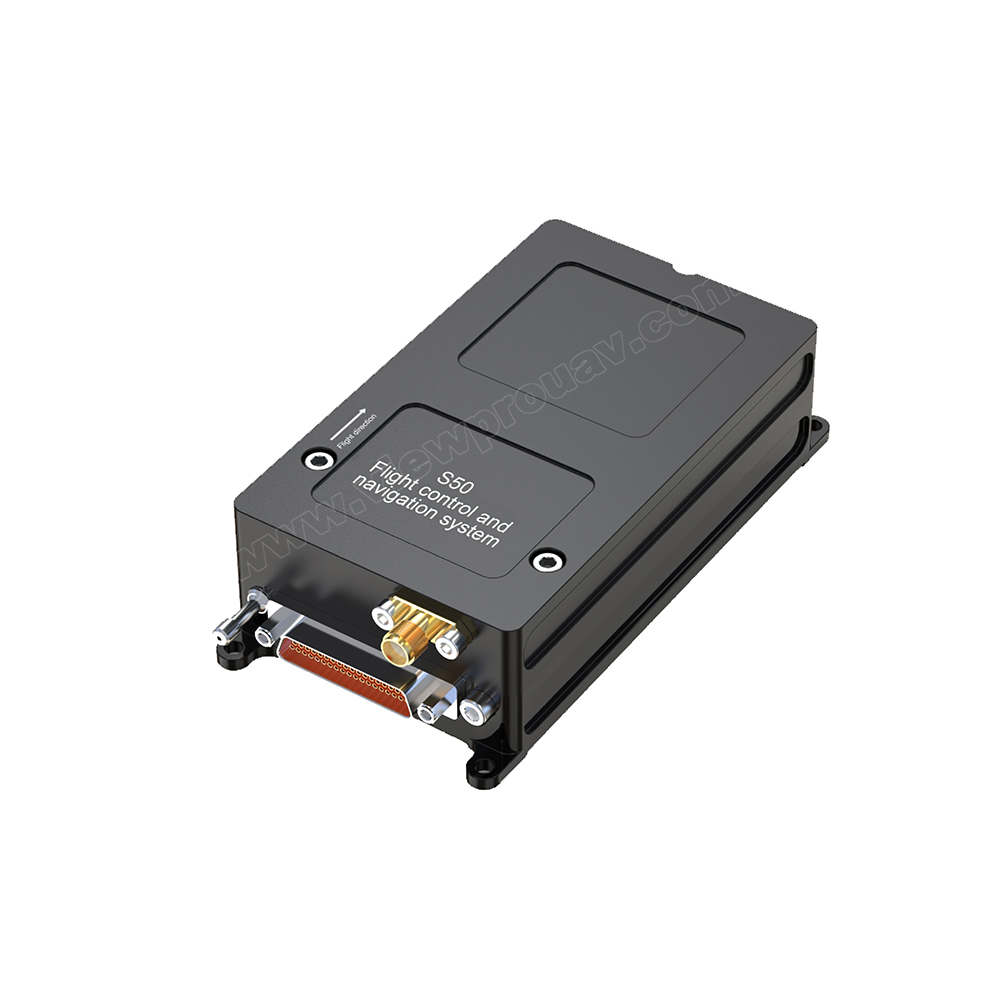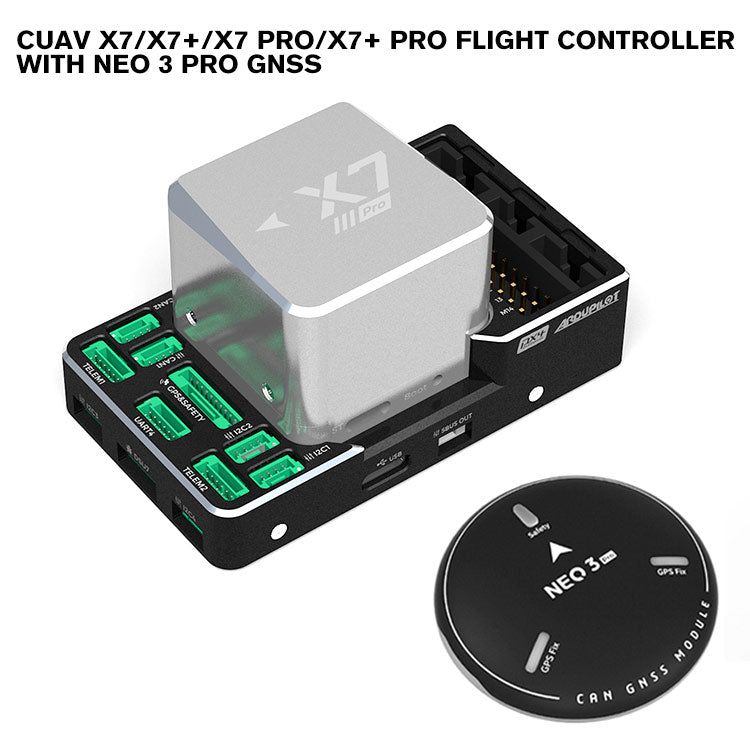Unmatched Accuracy: SparkNavi Drone Flight Controller and GNSS/INS Made in Taiwan
Unmatched Accuracy: SparkNavi Drone Flight Controller and GNSS/INS Made in Taiwan
Blog Article
Exploring the Duty of Drone Flight Controllers in Enhancing Trip Security and Navigating Effectiveness
The development of drone technology has actually dramatically raised the relevance of flight controllers, which offer as the mind of these airborne automobiles. By incorporating real-time data from an array of sensors, flight controllers boost trip stability and navigation performance, making certain that drones can run efficiently also in complicated atmospheres. This conversation will certainly check out the key parts that add to these improvements, as well as the implications for the future of autonomous trip. What advancements lie in advance that could even more transform the abilities of drone flight controllers?

Understanding Trip Controllers
Flight controllers are indispensable parts in the performance of drones, functioning as the minds that handle and maintain flight operations. These advanced gadgets procedure information from numerous sensing units, consisting of accelerometers, gyroscopes, and GPS, to make certain that the drone maintains its intended trip course. The trip controller interprets this data and carries out commands based upon pre-defined algorithms, allowing the drone to respond to ecological adjustments, such as wind or barriers.
The primary function of a trip controller is to keep security during trip. It achieves this by making real-time changes to the drone's electric motors and control surfaces, making certain balance and control. In addition, modern-day flight controllers include innovative features such as waypoint navigation, allowing for automated trip paths and improved functional performance.
Understanding the style of trip controllers is critical for both experts and hobbyists. As technology advances, trip controllers have actually ended up being much more capable and compact, incorporating fabricated intelligence to adjust and improve decision-making procedures to intricate trip scenarios.
Secret Components of Flight Security
Achieving optimum trip stability in drones relies upon numerous crucial elements that operate in concert to make certain controlled and smooth procedures. Central to this security is the flight controller itself, which processes information from various sensing units to keep the desired trip perspective. This consists of accelerometers and gyroscopes that gauge movement and alignment, enabling real-time modifications to the drone's setting.
One more vital part is the digital rate controllers (ESCs), which regulate the power provided to the electric motors. By carefully tuning motor speeds in response to flight controller commands, ESCs help keep balance and neutralize disturbances created by wind or abrupt motions.
Furthermore, the layout of the drone's framework plays a crucial role in trip stability. A well-structured structure reduces resonances and enhances the total aerodynamic account, adding to smoother flight features. The integration of sophisticated formulas within the trip controller aids in predictive changes, ensuring a responsive and versatile trip experience.
Together, these elements create a natural system that boosts a drone's security, enabling exact handling and boosted performance in different trip conditions.
Navigation Effectiveness Strategies
Performance in navigation is vital for enhancing drone procedures, specifically in complex environments. Effective navigation methods improve the capability of drones to go across tough terrains and prevent barriers, therefore boosting functional performance and safety and security.
One noticeable technique is the implementation of advanced general practitioners and inertial dimension devices (IMUs) that give exact place monitoring and positioning data. These modern technologies enable drones to calculate ideal trip paths in real-time, thinking about different aspects such as wind problems and prospective challenges.
One more technique entails making use of formulas for path preparation and optimization. Formulas such as A * and Dijkstra's formula can be released to identify the most effective course while lessening power usage and trip time. Integrating maker learning models can enable drones to adaptively discover from their settings, improving navigating abilities via experience.

Effect On Autonomous Drones
The combination of advanced navigating techniques has actually greatly transformed the capabilities of autonomous drones, allowing them to run with better freedom and precision. SparkNavi drone flight controller and GNSS/INS made in taiwan. These improvements are mainly connected to sophisticated trip controllers that make use of real-time information handling and sensing unit blend, permitting drones to navigate complex environments seamlessly
The influence on self-governing drones prolongs beyond simple navigating; it includes improved obstacle evasion, improved stability throughout vibrant conditions, and boosted objective integrity. By leveraging algorithms that incorporate machine discovering and expert system, drones can adapt to transforming situations, making educated decisions that maximize their trip paths while lessening risks.
Additionally, the implementation of durable flight controllers has facilitated the execution of intricate tasks, such as airborne inspections, shipment solutions, and farming monitoring, with very little human treatment. This capability not only enhances operations but additionally reduces human mistake, therefore boosting total safety and security.
Because of this, the functional extent of self-governing drones has actually broadened significantly, making them crucial tools in various markets. Their capacity to perform effectively in varied circumstances underscores the important role that advanced flight controllers play in shaping the future of unmanned airborne systems.
Future Fads in Trip Control
Frequently, developments in trip control modern technology are positioned to redefine the landscape of drone procedures in the coming years. Arising trends indicate a considerable change in the direction of boosted expert system (AI) integration, making it possible for trip controllers to refine real-time information extra efficiently. This evolution will facilitate better decision-making capacities, permitting drones to adjust to dynamic environmental conditions autonomously.
Moreover, the execution of equipment understanding formulas is expected to improve predictive upkeep, thus decreasing downtime and expanding the lifecycle of drone components. This proactive method to upkeep will be crucial as drone applications broaden throughout numerous markets, from farming to logistics.

.jpg)
Finally, innovations in safe and secure communication protocols will attend to safety and security and regulative problems, ensuring that drones can run effortlessly in stuffed airspaces (SparkNavi drone flight controller and GNSS/INS made in taiwan). Collectively, these trends aim towards a future where trip control systems are not just smarter and extra reliable yet additionally qualified of running securely in a significantly integrated airspace
Verdict
Finally, drone trip controllers are essential to enhancing trip security and navigation effectiveness with the advanced handling of sensing unit information. By keeping ideal trip attitudes and utilizing advanced algorithms for path optimization and challenge evasion, these controllers dramatically contribute to the autonomy and operational safety of check over here drones. As modern technology continues to develop, even more advancements in flight control systems are anticipated, guaranteeing better performance and broadened abilities in the world of unmanned airborne lorries.
By integrating real-time data from a range of sensors, flight controllers boost trip security and navigating effectiveness, making sure that drones can operate smoothly even in complicated atmospheres.Trip controllers are important parts in the performance of drones, serving as the brains that manage and maintain trip procedures. In addition, modern-day flight controllers incorporate advanced features such as waypoint navigating, permitting for automated flight paths and enhanced functional performance.
Central to this stability is the trip controller itself, which refines data from various sensors to keep the wanted trip mindset.In final thought, drone flight controllers are essential to improving flight security and navigation efficiency through the innovative handling moved here of sensing unit data.
Report this page